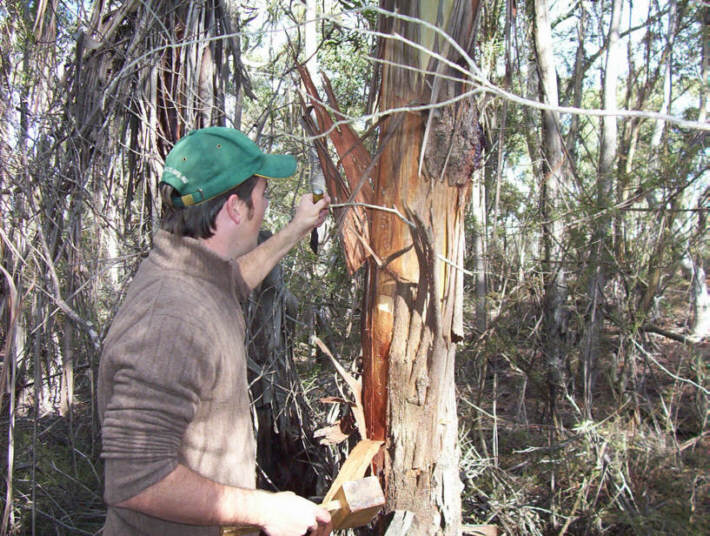The long raspy tail is a key feature of these lizards and I now know one of it's benefits to the lizard. Upon finding a Brown Falcon dead on the road I picked it up to have a closer look, it's neck was torn open and a Jackie Dragon's tail was sticking out of the oesophogus, the bird had swallowed the lizard headfirst and the tail had become caught in the Falcon's throat. A quick roadside autopsy confirmed that the rest of the lizard had been totally digested so the tail had been stuck in it's throat for days at least, this bird had suffered an agonising death either through starvation from it's blocked throat or had in fact torn it's own throat open in a vain attempt to get at the lizard tail stuck there, Nature at work for sure as that Falcon will never eat another Jackie Dragon.The scientific name for these lizards in case you were wondering is Amphibolurus muricatus
Luke and I lopped some high branches for Dr Brooker which he then trimmed down, placing each specimen into it's own specially numbered bag for further study at the Herbarium in Canberra, Luke then set to work with a wooden mallet taking neat squares of bark for microscopic study back in the lab. Max spent a lot of time with me and I can now add looking for tree scribbles and termite mounds to my list of favourite pastimes. It may take another year or two (or three) for the research to be finalised on the Nerriga Mallee and a scientific paper has to be written and accepted by a committee of scientists before it can be classified as a new species but the signs are good.

Copyright Paul Alessi 2006
